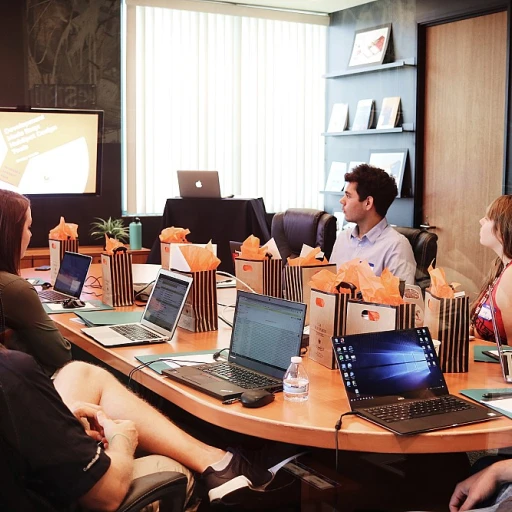Understanding the Skills Gap
Identifying the Disparity in Skills
The concept of a skills gap has become a focal point in today’s rapidly evolving workplace. This gap refers to the discrepancy between the skills that employers need and those that employees currently possess. In many industries, technological advancements and changing business landscapes have fast-tracked the demand for new competencies, both hard and soft. While technical expertise remains crucial, organizations have increasingly turned their attention to soft skills training, recognizing its role in effective communication and problem-solving.
Understanding the skills gap requires acknowledgment of the diverse range of skill sets that are essential for a well-rounded team. While hard skills pertain to an employee's ability to perform specific tasks, soft skills like emotional intelligence, active listening, and interpersonal communication are equally vital in fostering a cohesive and productive work environment. The absence of such skills often results in less effective teamwork, reduced leadership capabilities, and lower overall employee satisfaction. This underscores the importance of comprehensive skills development initiatives.
For businesses looking to thrive, closing the skills gap is not merely an option but a necessity. Encouraging a culture that values and nurtures soft skills can transform leadership approaches and facilitate critical thinking among team members. Employers who prioritize skills training stand to benefit from teams that are proficient in both time management and effective communication, thereby enhancing overall work performance. By implementing targeted training programs and continually assessing skill development areas, companies can bridge this divide effectively.
In conclusion, acknowledging and addressing the skills gap stands as a pressing endeavor. Cultivating employee capabilities necessitates structured training programs designed to hone both technical and essential soft skills. This holistic approach not only equips employees with the tools they need to succeed in today’s competitive business landscape but also sets the stage for long-term organizational success. For further insights on the pressing need to bridge this gap, you can refer to this comprehensive analysis on bridging the gap in essential soft skills.
The Role of Soft Skills in the Workplace
Key Role of Soft Skills in the Corporate World
In today's fast-paced work environment, the relevance of soft skills cannot be overstressed. Unlike hard skills, which are tangible and job-specific, soft skills like communication, emotional intelligence, and critical thinking play a crucial role in the smooth functioning of any business.
While technical competencies remain essential, organizations are increasingly prioritizing interpersonal skills to enhance effective communication and promote a healthy work environment. Surveys reveal a growing acknowledgment of soft skills as critical to collaboration and leadership, with problem solving and time management being particularly valued traits.
Impact on Team Dynamics
The adoption of soft skills significantly impacts team dynamics and skills development among employees. Team members with strong active listening and communication capabilities are likely to foster a space where feedback is effectively exchanged, leading to an increase in skills workplace productivity. An effective leader harnesses these skills to motivate their team members towards continuous improvements.
Cultivating a Balance Between Skills
It's important to strike a balance between soft and hard skills in any skills training or programs offered by organizations. The integration of soft skills learning into formal skills training programs can address various aspects of the skills gap. For more insights into bridging the gap in essential soft skills, consider exploring the resources available here.
Encouraging Employees to Adopt a Softer Approach
Promoting a Softer Approach in Professional Interactions
In the dynamic work environment of today, effective communication and interpersonal skills are essential soft skills that help foster a cooperative atmosphere. Encouraging employees to adopt a softer approach in their daily interactions is crucial for bridging the skills gap. This involves prioritizing emotional intelligence and active listening to enhance team collaboration and problem solving. By incorporating training programs that focus on soft skills development, businesses can emphasize the importance of empathy and understanding in their teams. Workshops focusing on effective communication and emotional intelligence can transform the workplace, fostering an environment where team members are more collaborative and supportive. Moreover, providing regular feedback allows employee feedback loops to operate effectively, ensuring continuous improvement and the reinforcement of soft skills. It also encourages skills tasks such as time management and critical thinking, building a robust framework for improved leadership skills. Organizations need to integrate these soft skill practices not only at an individual level but also as a core component of team dynamics. By doing so, they can effectively address skills workplace gaps, enhancing overall business productivity and work environment. For more insights on enhancing communication in the workplace, visit myFastbroker Insurance Solutions' blog on bridging the skills gap.Training and Development Programs
Enhancing Employee Proficiency Through Tailored Learning Options
In today's dynamic work environments, bridging the skills gap requires intentional efforts to upskill and reskill employees. Training and development programs are essential in nurturing both hard skills and soft skills like emotional intelligence and effective communication that are indispensable in the workplace. Firstly, businesses should consider customizing skills training to meet the specific needs of their teams. This personalized approach ensures that employees receive targeted learning that aligns with their roles and responsibilities. Incorporating a mix of online and face-to-face training options can accommodate different learning styles and schedules. Moreover, integrating emotional intelligence and active listening exercises in these programs can enhance the interpersonal skills that are increasingly vital across various industries. Not only do these components contribute to a more cohesive work environment, but they also empower employees with better problem-solving and critical thinking capabilities. Effective training programs should also support skill development in time management and leadership, preparing employees for future challenges and roles. Encouraging ongoing feedback throughout the training process fosters a culture of continuous skill enhancement, allowing employees to adjust their learning path for optimum results. Lastly, involving team members in the planning and execution of skills development initiatives can lead to more relevant and impactful training outcomes. Encouragement of this involvement promotes a sense of ownership over skill acquisition and personal growth, ultimately leading to a more competent and confident workforce ready to handle the demands of today's fast-paced business landscape.Overcoming Challenges in Soft Skills Training
Overcoming Obstacles in Soft Skill Enhancement
Navigating the landscape of soft skills development can present various challenges in the work environment. Addressing these hurdles effectively is essential to foster a thriving skills workplace. Here are some common obstacles businesses might face and strategies to overcome them:- Recognition and Prioritization: Often, skills such as communication and emotional intelligence are underestimated compared to hard skills like problem solving or critical thinking. Businesses should emphasize the value of soft skill development in achieving long-term success.
- Time Constraints: Employees often struggle to find time for additional training amidst their regular work commitments. Employers can introduce flexible training programs that accommodate the busy schedules of their team members, ensuring that learning and development become an integral part of their routine.
- Resistance to Change: Encouraging employees to adopt new skills or improve existing ones may face resistance. Leadership must create an open feedback culture, allowing team members to express concerns and understand the benefits of soft skills training in enhancing their leadership capabilities and work environment.
- Assessment of Progress: Measuring the effectiveness of soft skills training is inherently challenging. Implementing tools that assess changes in employee performance can offer insights into the impact of these programs on the skills gap.
- Inadequate Training Resources: Providing effective communication and active listening training requires investment in quality resources. Employers should prioritize their budget and allocate adequate resources to provide comprehensive soft skills training.
Measuring the Impact of Soft Skills on the Skills Gap
Assessing the Influence of Soft Skills in Reducing the Skills Gap
Measuring the impact of soft skills development on the skills gap is crucial for businesses aiming to thrive in today's competitive work environment. Soft skills training programs are not just add-ons but essential to effectively bridging the skills gap that many organizations face. Soft skills, such as effective communication, problem-solving, and emotional intelligence, are fundamental in shaping an adaptable and productive workplace. These skills enable employees to work collaboratively within teams, fostering an environment that enhances both individual and organizational performance. Several strategies can be employed to quantify the impact of soft skills training:- Feedback and Surveys: Regular surveys and feedback loops from employees and leadership can provide insights into how training programs have benefitted workplace dynamics. This method also encourages continuous learning and skill development.
- Performance Metrics: Comparing pre- and post-training performance metrics can highlight improvements in areas like time management and critical thinking. Enhanced interpersonal skills often translate to more efficient problem-solving and project management.
- Team Performance: Observing changes in team collaboration and productivity levels can be indicative of the effectiveness of soft skills training. Better communication among team members can significantly contribute to goal achievement.
- Employee Retention Rates: Improved soft skills often lead to a more positive work environment, increasing job satisfaction and reducing turnover rates. Tracking these changes can demonstrate the long-term benefits of investing in skills training.








